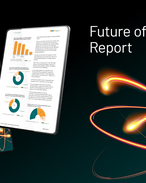This article is 20 years old. Images might not display.
Associate Energy Minister Harry Duynhoven told the 500-plus people - a record for a Kiwi conference - that the government was aware of the looming gas supply gap and that it had started talking with the exploration industry about possible future incentives to increase the level of drilling activity, which he conceded was “not nearly enough”.
The New Plymouth MP said: “the importance of the petroleum industry to New Zealand’s energy sector means more to me than any other person in Parliament, as the industry dramatically affects my electorate.”
He said he wanted the government’s petroleum assets to be worked hard to ensure greater monitoring and scrutiny of work programs. Duynhoven also said the government was now working with the Petroleum Exploration Association of New Zealand and others evaluating further incentives to increase exploration activity.
Duynhoven also announced a six-permit Offshore Northland block offer that will close on December 15. He expected great interest in this blocks offer as Northland had proven a sedimentary system and was essentially an extension of the productive Taranaki Basin.
As well, Todd Energy chief executive Richard Tweedie announced the Karewa gas discovery in licence PEP 602, on the edge of the Taranaki-Northland basins.
Todd estimated Karewa alone had P50 gas reserves, in the Pliocene-aged Mangaa sands, of about 60-150 bcf and other prospects identified in the neighbouring 486-487 licences could yield another 150-200 bcf.
The Polar Duke was to shoot a total of 600km of 2D seismic over the three permits, while Todd reprocessed a possible 3000km.
Tweedie said the Karewa-1 well, which was drilled a year ago, was not big enough for then-PEP 38601 operator ConocoPhillips, which was now off hunting elephants, nor Japan’s Inpex.
Todd, however, believed that further success in 601 and the new blocks could lead to a subsea development, complete with pipeline to shore and a tie-in to the Maui pipeline, within four or five years.
Tweedie - who seemed to be saying “crisis what crisis?” aka the 1970s Supertramp song - said there was no looming supply gas gap.
Known existing P50 reserves were enough to supply New Zealand’s gas needs to 2023, or 2018 with two additional 20PJ per annum gas-fired power stations.
The “horror stories” of New Zealand running out of gas before 2010 were mischievous.
He told Genesis Power chief executive Murray Jackson that the first tranche of Pohokura gas would be offered to the market “as soon as possible” and denied any delaying tactics by the Pohokura partners Shell NZ, Todd and OMV.
However, PEANZ executive officer Mike Patrick said that after 20 years of “neglect” the government finally seemed to be engaging the industry and working together to ensure a best possible post-Maui age. “Why did the government take so long to recognise the urgency of the gas situation?”
Patrick also queried the government’s apparent view that indigenous oil was not really an asset because crude was a internationally traded, readily available commodity. He also said the internal squabbling by some parties, on how to divide up the petroleum pie, had to end and joint efforts made to increase the size of the pie.
BP New Zealand chief executive Peter Griffith said BP saw a different picture gas to the Todd one.
He disagreed that known reserves would be sufficient, but conceded a shift was necessary towards renewable energy. However, that would go only a small way towards solving New Zealand’s energy crisis, which was being fuelled by continued economic growth and increasing energy usage.
“Unlike Richard Tweedie, I believe there will be a shortage of new power stations in the next 30 years and that by the year 2050 New Zealand will still rely heavily on the internal combustion engine.”
Griffith said LNG had to be considered for New Zealand and, if found to be economic, he favoured a floating offshore option or a land-based receiving plant north of Auckland.























